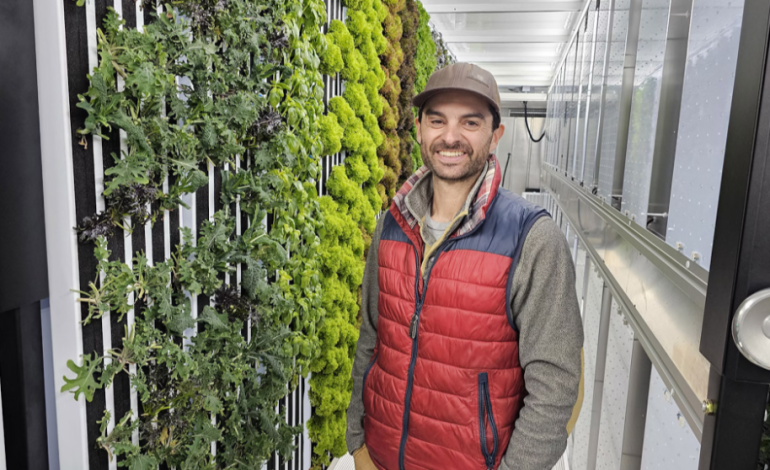In Lander, Wyoming, a group of students at Central Wyoming College (CWC) is bringing high-tech agriculture to life — inside a shipping container.
The 8-by-40-foot container, while modest in appearance, houses an advanced indoor farming system designed for year-round produce cultivation. Outfitted with LED lighting, sliding vertical grow walls, and an automated environmental control system, the facility supports the growth of leafy greens and herbs such as Bibb lettuce, kale, and basil — all without soil or sunlight.
The project is part of CWC’s Regenerative Small-Scale Farming associate degree program, the first of its kind in Wyoming. Developed in partnership with Boston-based company Freight Farms, the unit serves as both a classroom and a functional farm. The container operates overnight to take advantage of lower energy costs and cooler temperatures, and rests during the day — a schedule that also aligns with student instruction.
According to Ethan Page, a Local Food and Agriculture Instructor at CWC, the unit is only one of two Freight Farms in the state and the only one serving an educational purpose.
“The idea is that you can bring one of these really anywhere, hook it up to power and water, and start growing fresh produce year-round,” Page said.
These self-contained systems are increasingly seen as a potential solution to food deserts — areas where access to fresh produce is limited. Wyoming has 80 identified food deserts across 21 counties. By offering a local supply of fresh greens and herbs, the project helps address this gap in food accessibility.
Some of the produce grown in the container is used by CWC’s culinary students and served at campus events like the recent Innovation & Entrepreneurship Conference in Riverton. Additional harvests are sold at local markets, including the Meadowlark Market and Kitchen in Lander and the Fremont Local Market in Riverton.
Despite the $150,000 price tag — not including utility hookups and infrastructure — the unit is considered a cost-effective solution given rising land costs and limited access to farmland. It’s estimated that the container can yield the equivalent of two to four acres of traditional farmland.
While large-scale vertical farming companies have faced recent financial setbacks, Page remains optimistic about the potential of smaller, localized systems.
“We don’t really get local food here in Wyoming year-round,” he noted. “We’re trying to offer education and develop that workforce — young entrepreneurs who might want to go out and do this.”
In addition to supporting education and entrepreneurship, CWC’s indoor farm is contributing to food resiliency and community health, offering a glimpse into the future of sustainable agriculture in rural states.
With input from Vertical Farm Daily, and Cowboy State Daily.








The latest news in your social feeds
Subscribe to our social media platforms to stay tuned